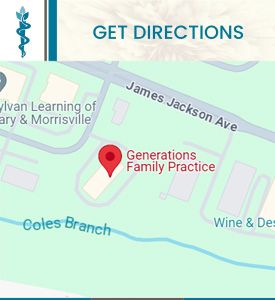You cannot copy content of this website, your IP is being recorded
Generations Family Practice
1021 Darrington Drive, Suite 101 Cary, NC 27513.
Hours of Operations
Mon - Fri: 7:00 AM - 6:00 PM, Sat: 9:00 AM - 1:00 PM
Closed for lunch 12:00 PM — 1:00 PM


